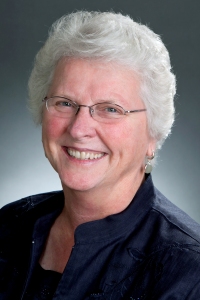
Dec 01A letter from Mercy Housing CEO Sister Lillian Murphy, RSM
Community Matters Newsletter – Fall 2012
My fellow visionaries,

Today, one in six Americans is affected by poverty. Sadly, it has become an epidemic, spreading beyond cities and suburbs and into rural communities that once boasted thriving farms and manufacturing businesses. It is also extending from one generation to the next.
Yet, today, we know more about what it takes to build vibrant communities and to help people lead healthy, productive lives. We know that improving access to affordable housing, schools, transportation, jobs, and even supermarkets and parks, can mean improved health and life outcomes for people and revitalize entire communities.
Recently, data from the Census Bureau showed that the nation is stuck at record high poverty levels. In response, leaders from the public, private and non-profit sectors, including myself, authored a new book entitled Investing in What Works for America’s Communities.
Investing in What Works for America’s Communities is divided in three sections. The first section traces the history of community development alongside the evolution of American poverty, highlighting initiatives like the Harlem Children’s Zone, Living Cities’ Integration Initiative, Purpose Built Communities, and other exemplary community-building efforts. The second section features voices and opinions from leaders in philanthropy, and other fields that are working to reduce poverty and address race, equity, transit-oriented development, and financial services for lower-income people. Advocates from the worlds of housing, policy, universities, think tanks, and health all share their keen insights.
The third and final section presents a plan for moving ahead, informed by several insights, of which the most profound may be that “community development is about the entire life of the community.”
I am steadfast in my belief that all sectors of the housing industry will have to step up in several ways. The public sector must become more flexible in its regulations and provide funding at the enterprise level on the basis of outcomes rather than just compliance. Private financial institutions will have to provide funds at lower costs and be willing to tolerate some risk…
The challenge is for everyone to think outside of the box.
Investing in What Works for America’s Communities, published today by the Federal Reserve Bank of San Francisco and the Low Income Investment Fund (LIIF) is available at www.whatworksforamerica.org.
Live in Hope!
(Source: Community Matters Newsletter – Fall 2012)
No related posts.
Stay Up To Date
Get news on Mercy Housing and inspiring stories of change delivered to your inbox.


